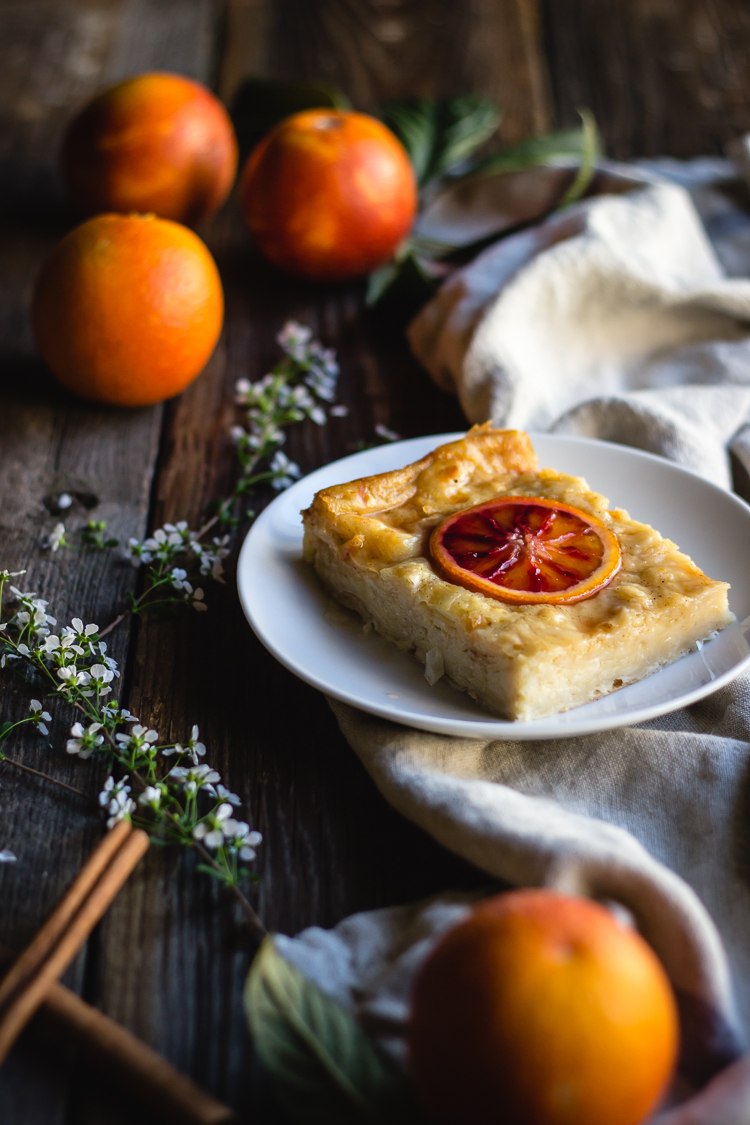
We’re in the height of citrus season here in California and it is truly one of the most wonderful times of the year. I am always amazed at how out of the cold, gray days of winter comes the bright, sweet gift of citrus. Living near the foothills of the Sierra Nevada, we are blessed with ready access to a huge bounty of winter citrus and in our neighborhood, there are orange trees literally everywhere. Oranges are a very abundant crop in Greece as well, where one will continuously find them used in all manner of ways throughout Greek cuisine. One of those ways is portokalopita (pronounced: por-toh-kah-LOH-pee-tah) a Greek orange and phyllo cake that is the ultimate celebration of orange season.

Portokalopita hails from the Chania region of the island of Crete, which is where my hubby’s mother was born. The climate and terrain in Chania are very similar to California. The ‘Lefkon Oreon’ is the snow covered mountain range that supplies the foothills and valleys below with precious water to sustain the land during the hot, dry summer. The land below the Lefkon Oreon is prime for growing citrus, so the region is blanketed with orange trees, which is why oranges are a huge part of the Cretan diet and the main feature of many of their winter recipes.

For our portokalopita I have chosen to feature blood oranges as they are one of the true treasures of the winter citrus season here in Northern California. Their deep garnet flesh is created by the presence of anthocyanins, a family of antioxidant pigments that not only make for a uniquely colored orange but the flavor is totally distinct, with notes of raspberry and less acidity than a standard orange. Any type of orange will work in this recipe however, but if you can get your hands on some blood oranges, definitely try them out – they have become the winter fruit we look forward to most.
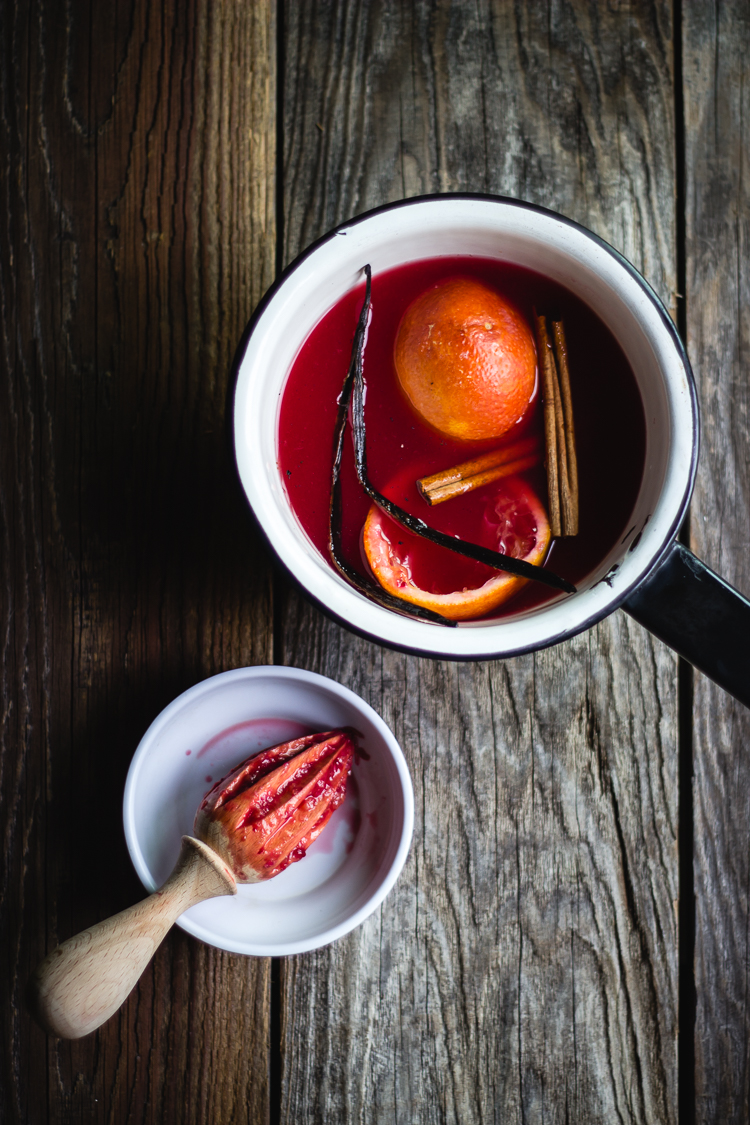

Portokalopita is different from traditional Greek dishes that call for phyllo dough, the sheets of phyllo do not get layered in the traditional way one would expect from Greek cooking, they get all crumbled & torn up into the pan. This unexpected application of the phyllo dough makes portokalopita one of the simplest Greek dessert recipes, which makes it perfect for those who may be intimidated by the thought of working with paper thin phyllo dough.
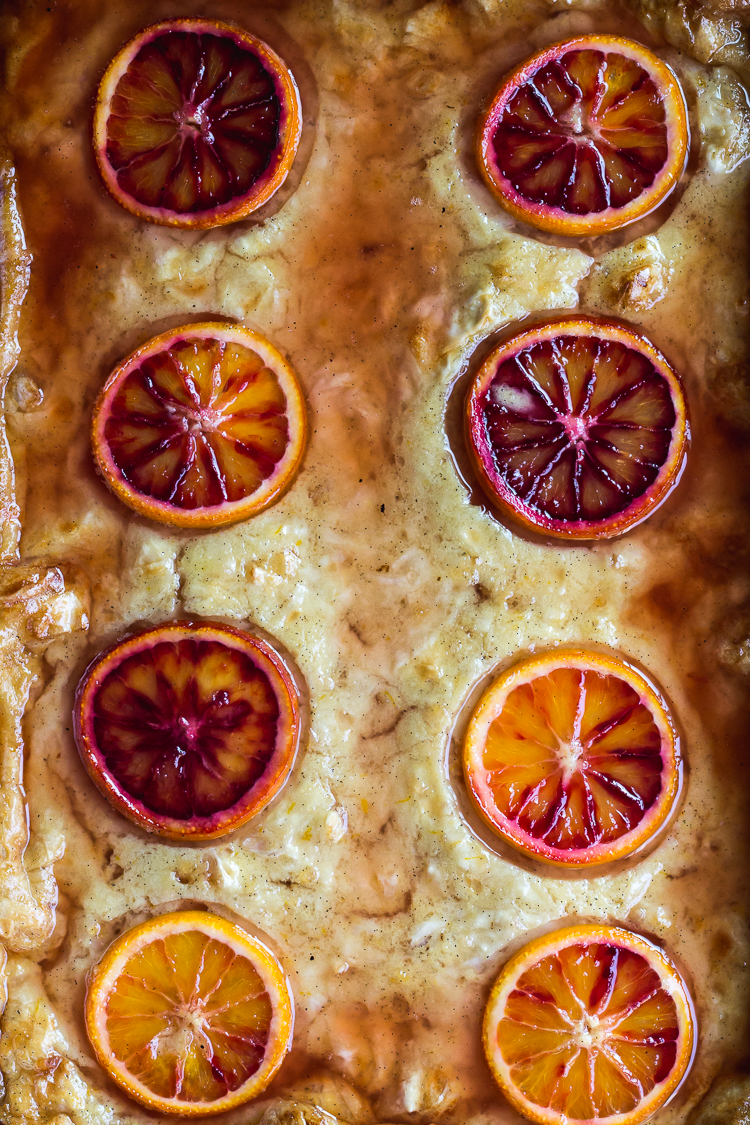
A custard made of Greek yogurt, pastured eggs, olive oil, honey, vanilla, orange juice and zest gets poured over the torn phyllo. Once baked, the portokalopita gets drenched with a cinnamon, vanilla and blood orange infused honey syrup. The slices of orange that get placed on top make for beautiful presentation and actually taste lovely as well. The flavor of our portokalopita has a nice brightness from the blood oranges that is perfectly complimented by the flavors of vanilla and cinnamon.
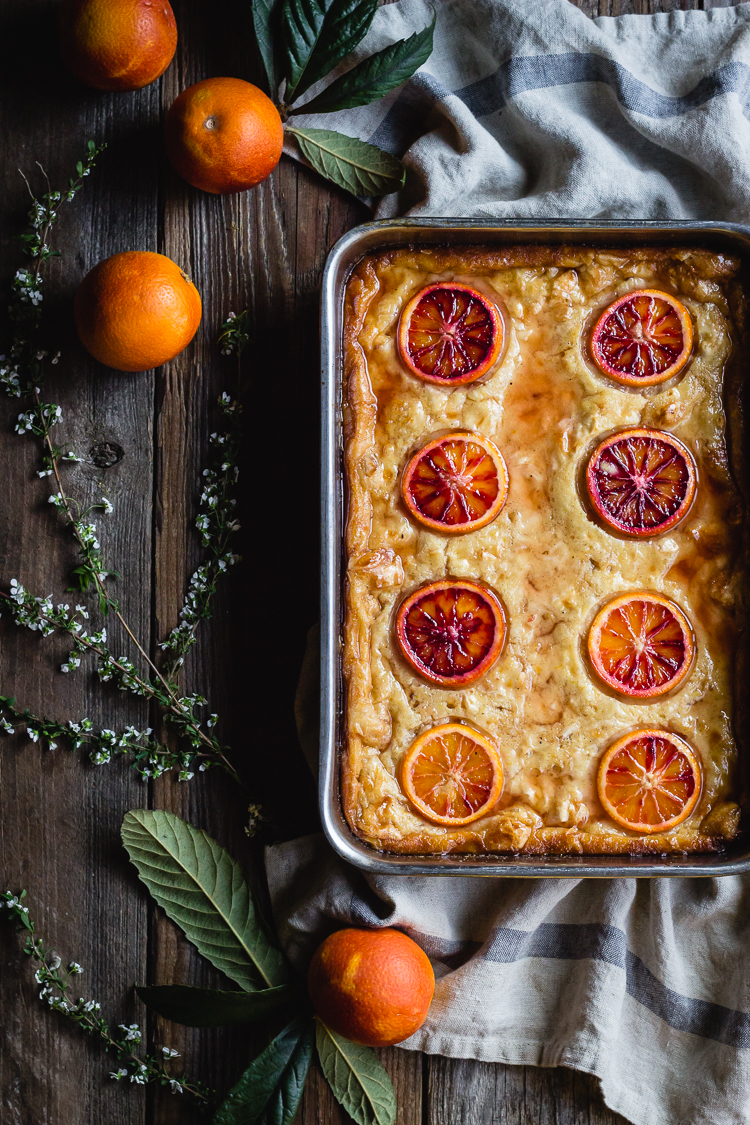

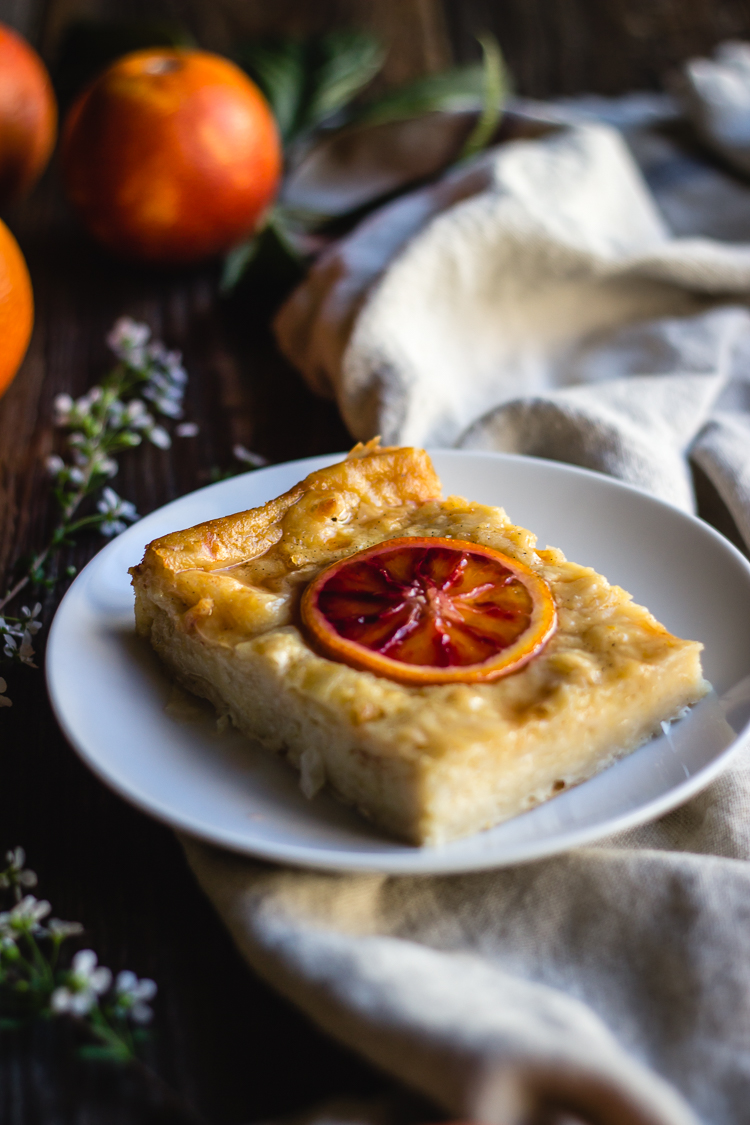
The marriage of orange, vanilla, honey & cinnamon into a tender and creamy Greek pastry is the manifestation of a citrus dream. The aroma of the syrup simmering on the stovetop and the cake baking in the oven is the greatest prelude to the dessert that is to come. The wait is always the hardest part with Greek desserts, as you have to let the syrup soak into the pastry for hours before you can eat it, but the sweet bliss that your patience gets rewarded with makes it totally worth it. Portokalopita has become one of our most treasured winter recipes: it is like sunshine to the dark skies and sweet comfort from the cold air – it is winter solace in the form of a cake.
PrintPORTOKALOPITA
- Yield: 8 1x
Ingredients
FOR THE SYRUP:
- 1 cup honey
- 1/2 cup water
- 1 blood orange
- 1 cinnamon stick
- 1 vanilla bean pod (reserved after removing vanilla beans)
FOR THE CAKE:
- 16 oz phyllo dough, thawed in refrigerator overnight or 2 hours on counter (if using frozen phyllo)
- 1/2 cup olive oil + 2 tbsp for greasing pan
- 1 cup Greek yogurt
- 3 blood oranges
- 1/2 cup honey
- 4 eggs
- 1 vanilla bean, seeds scraped
- 2 tsp baking powder
Instructions
FOR THE SYRUP:
- Start by scraping the vanilla beans from the pod and reserve these for the cake
- Cut orange in half and juice into a medium pot
- Add honey, water, cinnamon stick, vanilla bean pod & orange peels to the pot and stir to combine
- Bring mixture to a boil and simmer over medium heat for 8 minutes
- Remove from heat and let cool to room temperature while you make the cake
FOR THE CAKE:
- Pre-heat oven to 350f degrees
- Brush a 9×13″ stainless steel pan with 2 tbsp of olive oil
- Tear and crumble phyllo sheets into approximately 2″ pieces into the prepared pan
- Slice 1 orange into 1/8″ thick slices & reserve for topping off the cake – you will need 8 pieces
- In a bowl, whisk eggs until frothy
- Use a zester to harvest the zest of 1 orange
- Add yogurt, juice of 2 oranges, zest of 1 orange, 1/2 cup honey, vanilla beans (reserved from pod), and 2 tsp baking powder – whisk together with the eggs until well combined
- Pour custard over phyllo dough, distributing the custard evenly over the torn phyllo pieces
- Use a spoon to stir the custard into the phyllo – making sure the custard is evenly incorporated into the phyllo
- Top cake off with orange slices
- Bake cake in the center of the oven for 40 minutes
- Upon removing from the oven, immediately pour the cooled syrup over the cake, using a ladle to evenly distribute the syrup over the cake
- Allow syrup to absorb into cake for at least 2 hours before serving or if you can bare to wait, the cake is even better the next day
- Slice into 8 slices and serve


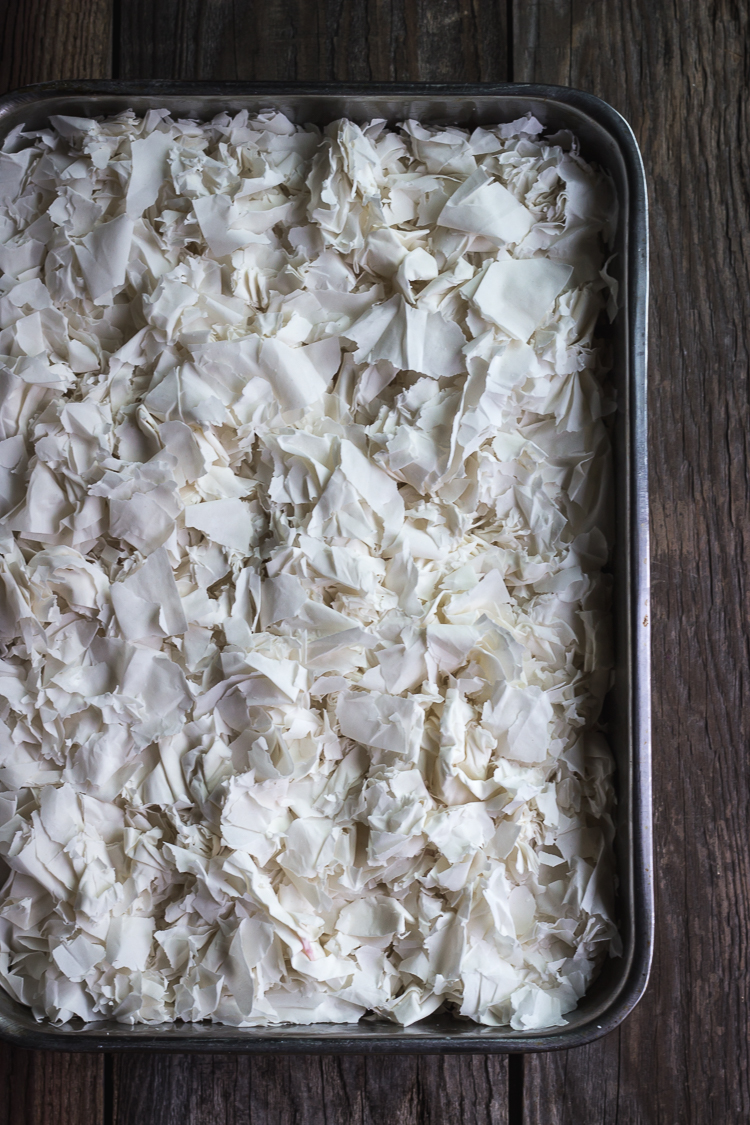
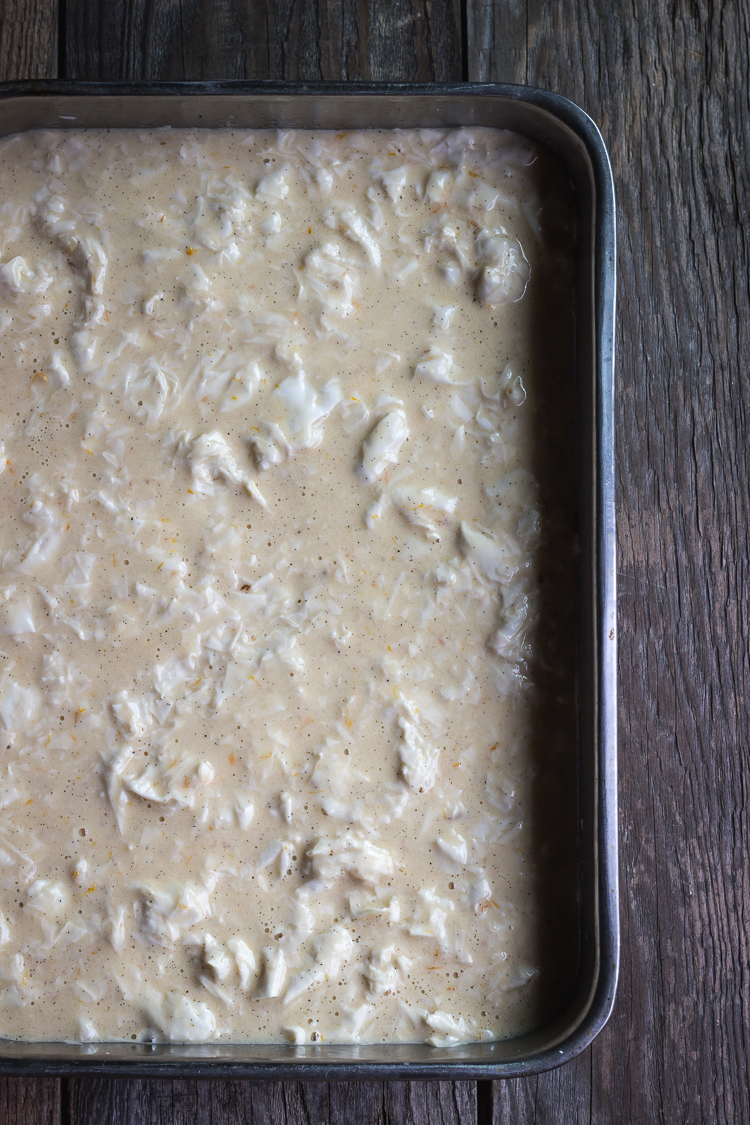
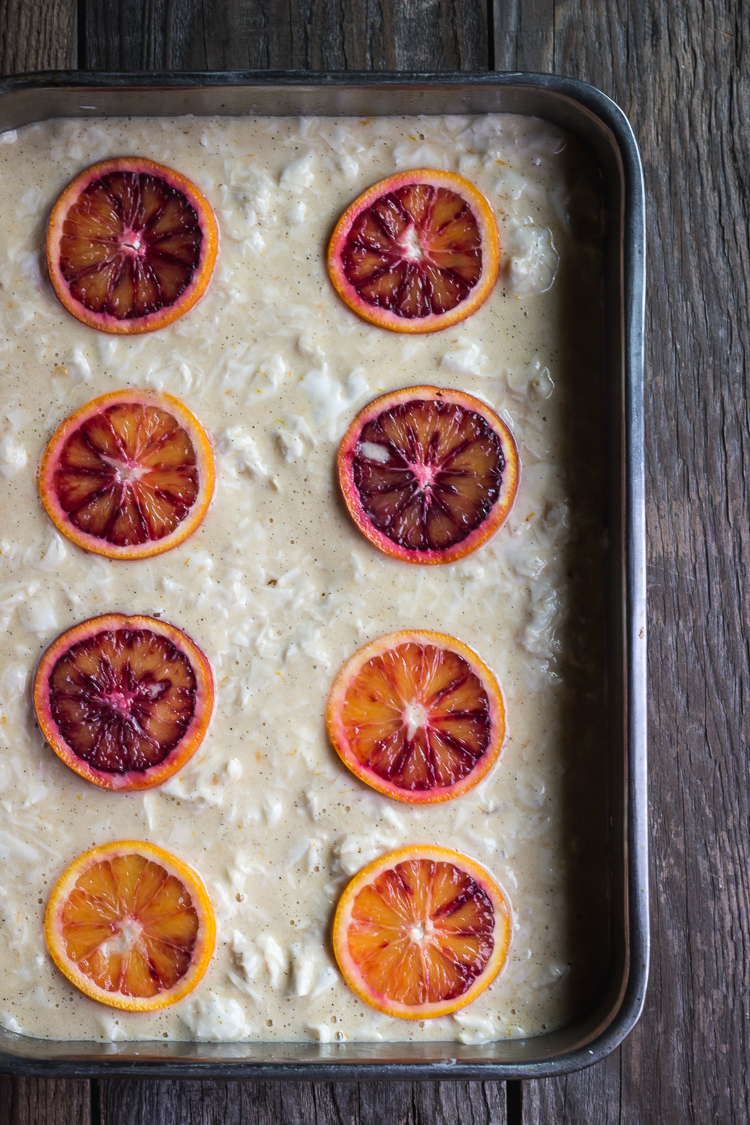
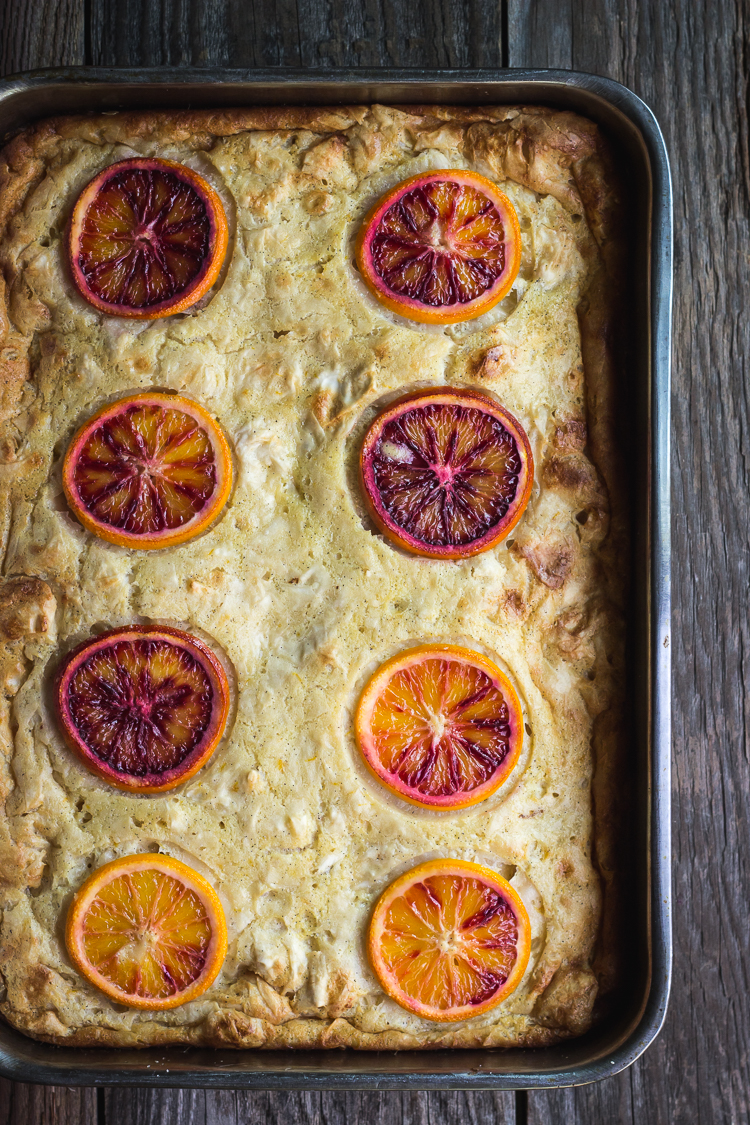

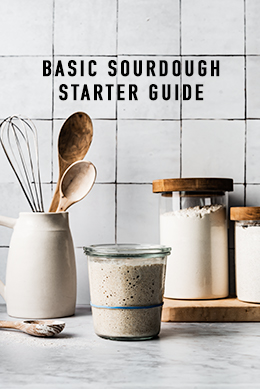







Thank you for sharing these recipes, your photographs are really beautiful and I enjoy your writing very much! Do you happen to have a recipe for gluten free fyllo? I have coeliac disease and I’m not able to get ready-made gluten free fyllo where I’m from. I would really appreciate it!
Hi Christina!
Thank you so much! I really appreciate it!
I actually do not have or know of a recipe for a gluten free version of this type of phyllo dough! You could always try making gluten free puff pastry, baking it alone and then crumbling it into the pan as you would the raw traditional phyllo. My friend Helen of http://www.hungryandfussy.com has an awesome gluten free pastry recipe that she recently posted. I would just omit the salt since this is a sweet application. I would also double her recipe as our portokalopita recipe calls for 1 lb. of phyllo.
I hope this helps! And please let me know if you try it out!
Made this yesterday afternoon and cut into it 3-4 hours later. The taste was lovely (even though I forgot to include the vanilla pod seeds), but the texture was not great because I apparently did not get the custard incorporated enough. Could the phyllo be dropped into the custard and incorporated in stages instead of pouring the custard over the phyllo?
You could definitely try that! I’m sorry your first go did not work out so well :(
I have never had a problem with it the way the recipe is written – if you decide to try it again, just make sure you don’t pour the custard all in one spot of the pan. I slowly pour it all over the pan, which helps evenly distribute the custard – then I use a spoon to kind of ‘feel’ around and make sure that every nook & cranny got some of the custard!
I hope your 2nd attempt goes perfectly! <3
Hi, I love your food styling props. Where did you get that napkin?!
Hi Jenna! Thank you! I actually got that towel at Cost Plus World Market!
Your photos are great and your description is fantastic. I think I’ll make this today!
Thank you so much Jessica! I hope you enjoy it! <3
Bella! As I think you know, I found you via Instagram and am so happy I did.
I’ve been poking around your gorgeous site and was especially excited to come across this recipe. I learned how to make a similar version of this same cake when I was in Greece doing research for Yogurt Culture. Your cake and mine in the book have some key differences (I see on your About page that your husband is Greek!), so I love knowing there’s another version out there for me to try. I also love (finally) knowing the proper Greek name for this cake:)
Please get in touch if you’d ever like to talk yogurt! I’d love a chance to expose more of your lovely work to my community.
It is so wonderful to meet you Cheryl! I look forward to looking at your recipe & I am grateful to teach you a little Greek as well! :D
I would love to keep in touch and surely will! <3
I am so glad I found your blog snd this recipe!
Although not Greek, I spent all my summers for 20 years, growing up in Mytilene and visiting many of the islands.
Greek cooking holds a special place in my heart and I love blood oranges! I’ll make this soon!
Eliana
Hi Eliana! Its so nice to meet you! I am not Greek either, but I have also fallen in love with the culture I married into, with Greek cooking being the way I won my way into my in-laws hearts! I can’t wait for you to try the portokalopita! Let me know how you like it! <3
Can this be frozen to use at a later date or is it best eaten within a few hours. Thank you
Hello Barbara! I have honestly never tried freezing this dessert! I would say it is best eaten within 1 day at room temperature of 2-3 days if stored in the refrigerator. If you try freezing it, let us know how it holds up :)